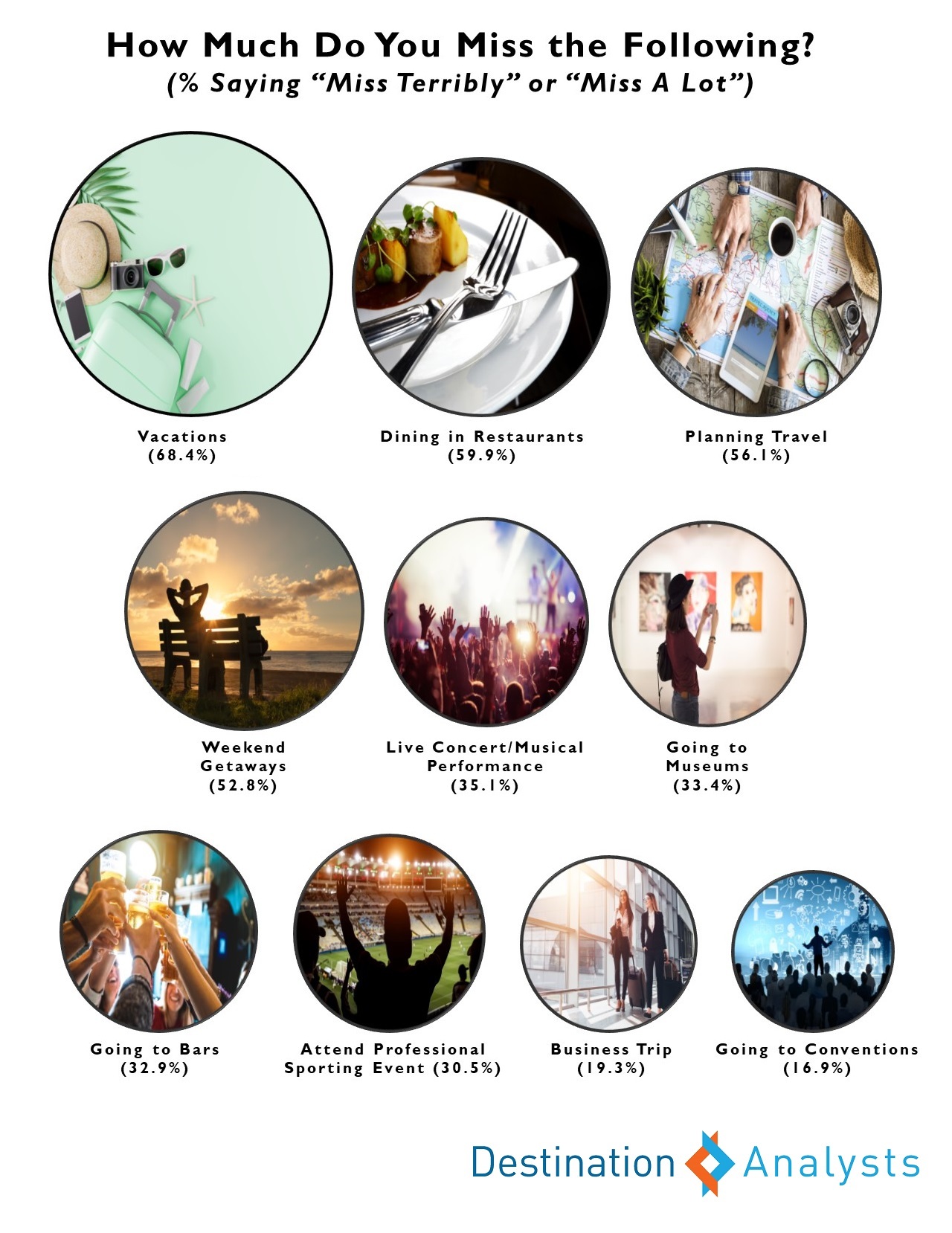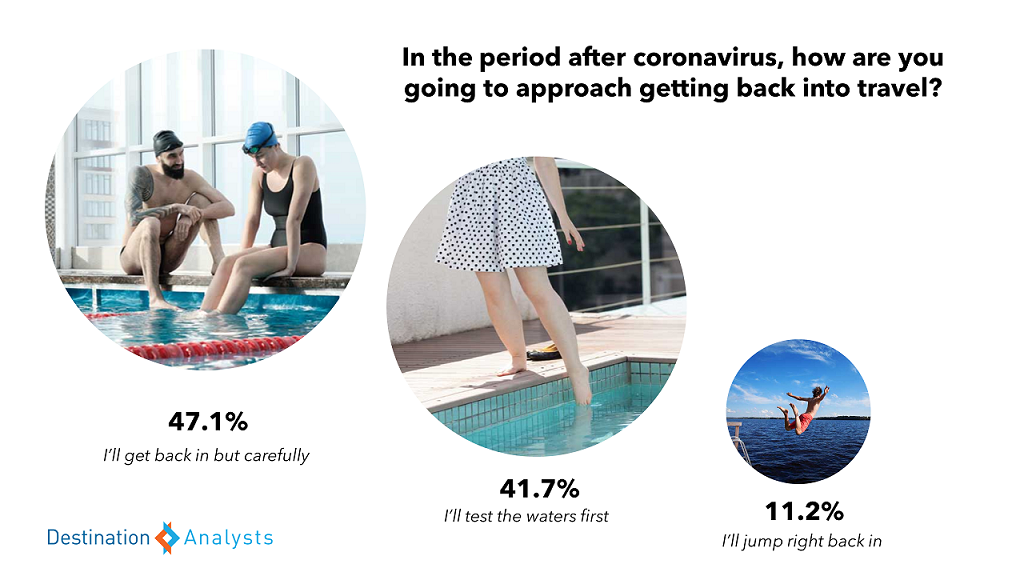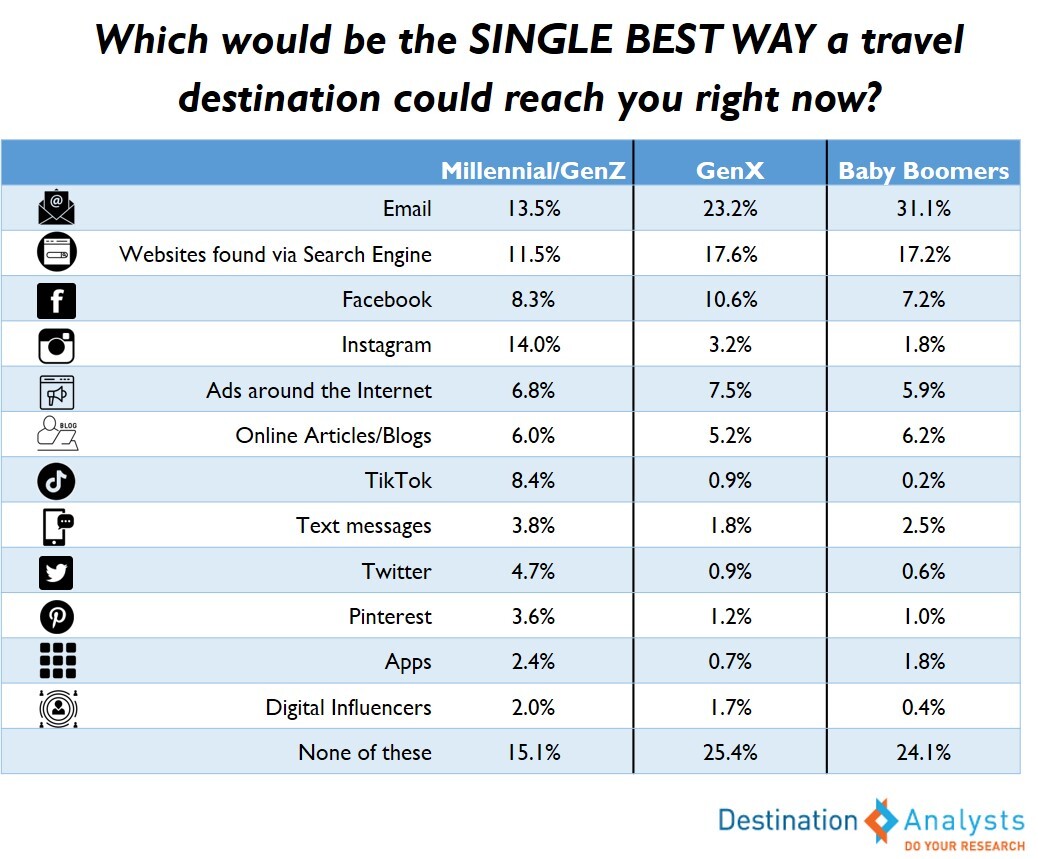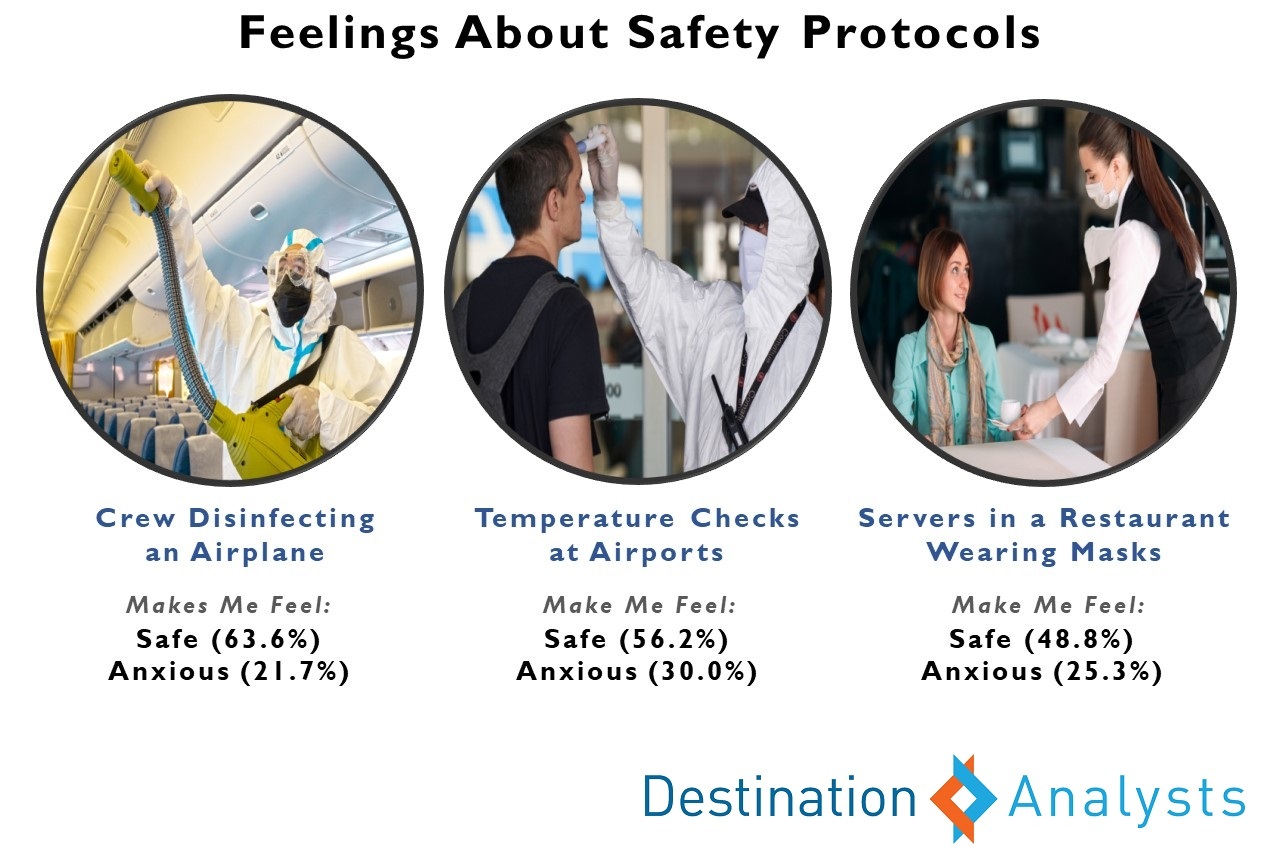Update on Coronavirus’ Impact on American Travel—Week of May 11th
Americans’ caution-led feelings and plans for travel for the remainder of the year highlight the challenge travel providers face in devising their near-term strategies. But seeing your travel destination advertising online can inspire joy.

IMPORTANT: These findings are brought to you from our independent research, which is not sponsored, conducted or influenced by any advertising or marketing agency. Every week since March 15th, Destination Analysts has surveyed 1,200+ American travelers about their thoughts, feelings, perceptions and behaviors surrounding travel in the wake of the coronavirus pandemic. The findings presented below represent data collected May 8th-10th.
Key Findings to Know:
- American Travelers are Feeling More Comfortable but Not Necessarily Confident, with Women and Baby Boomers More Cautious
- Many May Be Waiting to Assess the Experience of the Early (Re)Adopters to Travel
- Caution-Led Feelings about Travel and Trip Plans Make Estimating Potential Trip Volume Over the Summer More Challenging
- Travel Ads Deliver Joy, Especially in the Right—Primarily Social/Digital–Setting
- Travelers are Exhibiting Strong Trust in DMOs for the Information They Need to Travel Safely
- New Protocols Inspire Safety, with Some Anxiety
Americans travelers are feeling more comfortable this week, but not necessarily more confident. American travelers’ feelings about COVID-19’s impact on their personal finances (6.5/10) and national economy (7.9/10) is at an 8-week low. However, optimism that coronavirus will get better in the U.S. in the next month dipped to a 4-week low. Women and Boomer travelers continue to exhibit more elevated levels of caution around the virus and travel. Nevertheless, the percent of American travelers who feel they will avoid travel until coronavirus is resolved continues to slowly decline (64.8%), and the perceived safety of flying on a commercial airline, staying in a hotel, dining in restaurants and visiting attractions continues to improve from lows seen in early April.

Many American travelers may be waiting to assess the experiences of the early (re)adopters to travel. Nearly 7 in 10 say they miss vacationing a lot–their heart aches for it. Over half say they miss the very act of planning travel. However the vast majority still say they will approach travel with trepidation as they think about starting again.

Americans’ caution-led feelings and plans for travel for the remainder of the year highlight the challenge travel providers face in devising their near-term strategies. This week, 36.0% of American travelers report having one or more trips planned between now and the end of August. But 45.3% estimate they will end up taking their next road trip in this same period (and 20.1% their next air trip) suggesting higher trip volumes potentially on the horizon. Americans estimate the distance of their next road trip to be 423 miles on average, although 43.2% report it will be under 200 miles.
Travel advertising can deliver joy, especially in the right setting. This week, 17.8% of American travelers recall seeing a travel destination ad within the past month and 56.3% say the most recent travel ad they saw made them feel happy. This feeling was particularly pronounced among Millennials. Over 85 percent of Millennial and GenZ travelers–and 7 in 10 GenX and Boomer travelers—cite a digital resource as where they will be most receptive to a travel messaging reaching them, with social media powerhouses like Instagram and Facebook as well as search engine marketing appearing the likeliest means for meeting travelers where they are. Email also looks to be one of the best ways to reach all ages of travelers in a state of openness to travel messaging.Travelers would like destinations to speak to them in an honest (59’.0%) but friendly (39.6%) tone in advertising.


Travelers are exhibiting strong trust in official destination marketing organizations. When asked about the resources they would trust to provide the information needed to travel safely, official state tourism offices and local visitors bureaus were cited second behind friends and family.
In reaction to new safety protocols being introduced, seeing crews disinfecting an airplane, temperature checks being performed at airports and masks on restaurant staff largely increase travelers feelings of personal safety; although they stimulate some anxiety, as well.



